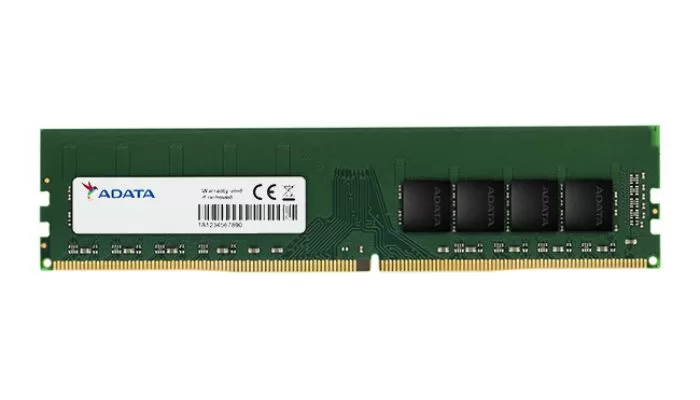What is DDR4?
DDR4 stands for Double Data Rate 4, and it is the fourth generation of DDR memory technology. It is an improved version of its predecessor, DDR3, offering faster speeds, higher capacities, and lower power consumption.
DDR4 is the next generation of memory technology that offers faster speeds, higher capacities, lower power consumption, and improved system stability. Whether you’re a tech enthusiast or a casual user, upgrading to DDR4 can greatly enhance your computer’s performance and overall experience.
DDR4 is the successor to DDR3, offering significant improvements in terms of performance and power efficiency. It provides higher data transfer rates and lower power consumption, making it a top choice for modern computing devices.
One of the key advantages of DDR4 is its increased data transfer rates. DDR4 memory modules can transfer data at speeds of up to 3200 MT/s (megatransfers per second), which is significantly faster than the 2133 MT/s offered by DDR3.
Another important feature of DDR4 is its higher memory capacity. DDR4 modules can support up to 128GB of memory per module, compared to the maximum of 16GB supported by DDR3. This increased capacity allows for more data to be stored and processed, making DDR4 ideal for demanding applications such as gaming, video editing, and virtual reality.
How Does DDR4 Work?
DDR4 memory operates by transferring data on both the rising and falling edges of the clock signal, effectively doubling the data transfer rate compared to its predecessor. This means that data is moved twice per clock cycle, resulting in faster and more efficient performance.
DDR4 also offers improved power efficiency. It operates at a lower voltage of 1.2V, compared to the 1.5V used by DDR3. This reduction in voltage not only helps to lower power consumption but also generates less heat, resulting in improved system stability and reliability.
In addition to its technical advantages, DDR4 also brings some aesthetic improvements. DDR4 modules often feature sleek and stylish designs, with options for customizable RGB lighting. This allows users to add a touch of personalization to their computer systems, creating a visually appealing setup.
Wondering how DDR4 affects your daily tech experiences? Here are some real-world scenarios where DDR4 plays a crucial role:
- Gaming: DDR4 memory enhances the gaming experience by reducing lag and improving frame rates.
- Multitasking: Whether you’re a professional or a student, DDR4 allows you to work with multiple applications simultaneously, without slowing down your device.
- Content Creation: For creative professionals, DDR4 memory is a game-changer. It allows for seamless video editing, rendering, and graphic design.
- Server Performance: In the world of servers, DDR4 is the backbone of high-performance data centers, ensuring swift data access and processing.
So, who can benefit from DDR4? The answer is anyone who wants to enhance their computer’s performance. Whether you’re a gamer looking for faster load times and smoother gameplay, a content creator working with large files and complex projects, or just a casual user who wants a more responsive and efficient system, DDR4 is the way to go.
However, it’s important to note that DDR4 is not backward compatible with DDR3. This means that if you want to upgrade to DDR4, you will need to ensure that your motherboard and other hardware components support DDR4 technology.
| Feature | DDR4 | DDR3 | DDR5 |
|---|---|---|---|
| Introduction | DDR4, the fourth generation of DDR Synchronous Dynamic Random-Access Memory (SDRAM). | DDR3, the third generation of DDR Synchronous Dynamic Random-Access Memory (SDRAM). | DDR5, the fifth generation of DDR Synchronous Dynamic Random-Access Memory (SDRAM). |
| Release Year | 2014 | 2007 | 2019 |
| Data Transfer Rate | Faster than DDR3, offering higher bandwidth and data transfer speeds. | Slower compared to DDR4, with lower bandwidth and data transfer speeds. | Faster than DDR4, with even higher bandwidth and data transfer speeds. |
| Voltage | Operates at a lower voltage, providing energy efficiency. | Operates at a higher voltage compared to DDR4. | Operates at a lower voltage for improved power efficiency. |
| Capacity | Offers higher capacity options, allowing for more memory in devices. | Limited in capacity compared to DDR4. | Provides increased capacity options. |
| Compatibility | Requires a motherboard that supports DDR4. Not compatible with DDR3 slots. | Compatible with DDR3 slots but not interchangeable with DDR4. | Requires a motherboard that supports DDR5. Not compatible with DDR3 or DDR4 slots. |
| Use Cases | Ideal for modern computing, gaming, multitasking, and content creation. | Suitable for older devices and basic computing tasks. | Designed for high-performance computing, gaming, and future-proofing. |
| Future Technology | Still widely used as of the article’s publication date. | Gradually being phased out in favor of DDR4 and DDR5. | The latest memory technology promising better performance and efficiency. |
DDR4 and DDR5 are the primary choices for modern computing, with DDR5 offering even better performance and efficiency. DDR3 is becoming outdated and is mostly found in older systems. It’s important to ensure compatibility when upgrading or purchasing new memory for your devices.

